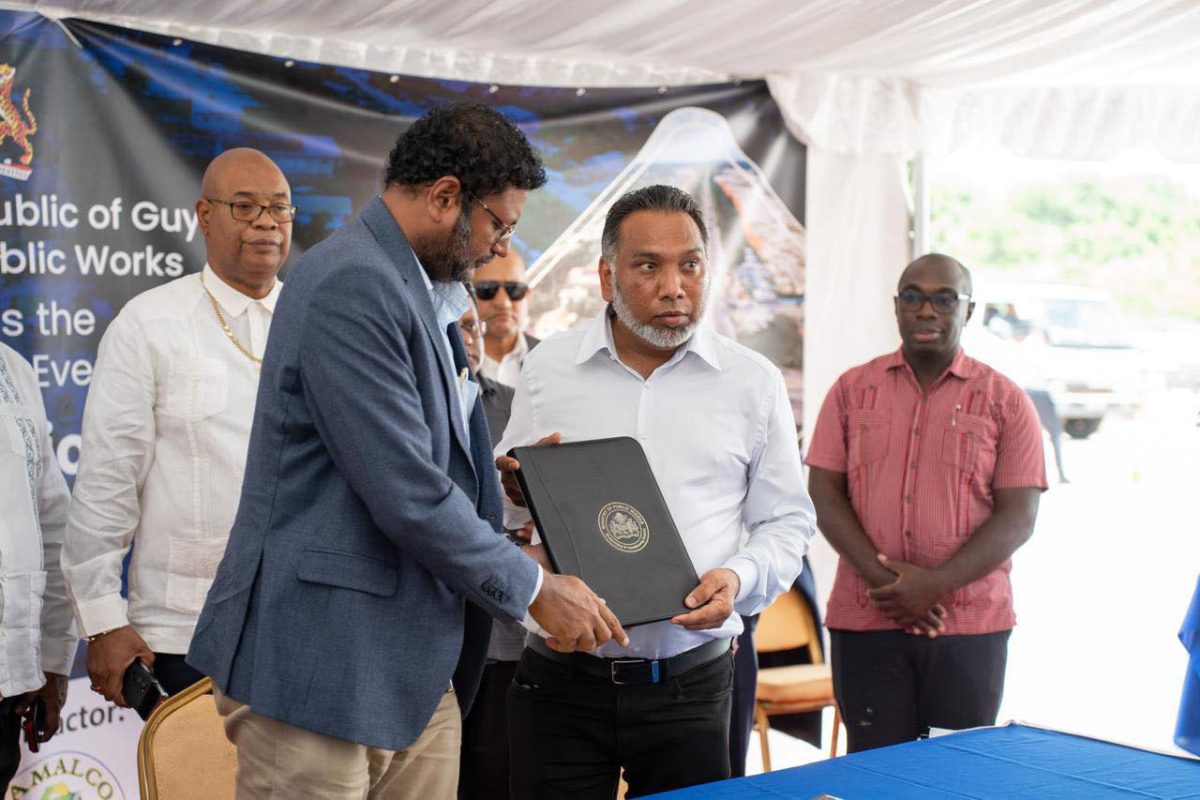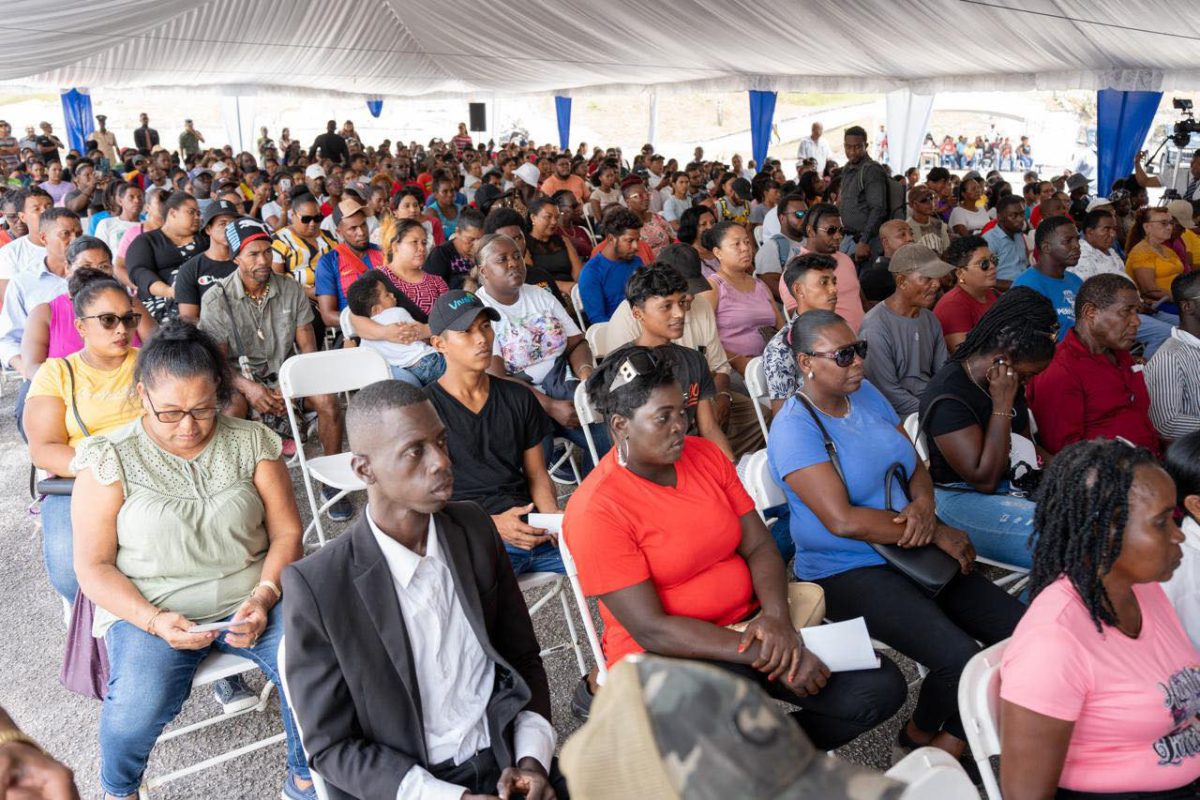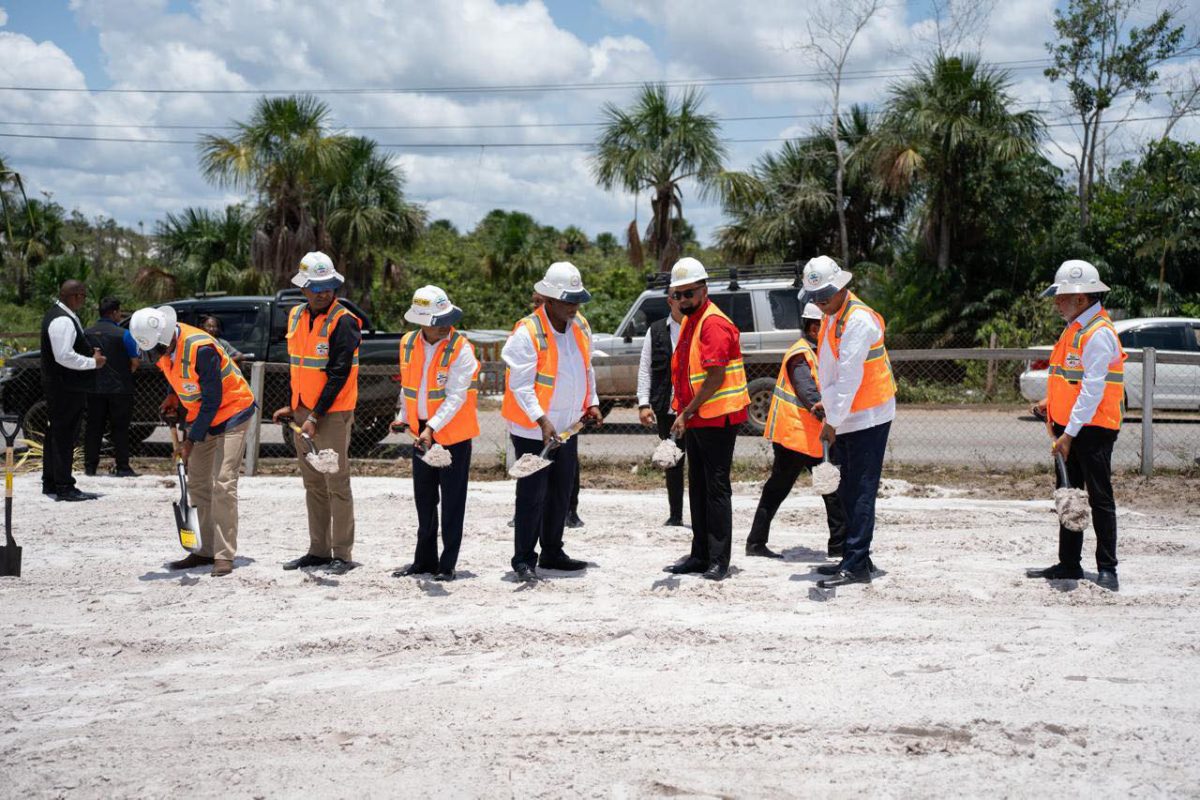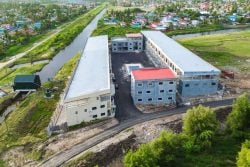By Marcelle Thomas
Reconstruction of the more than half-century-old Linden/Soesdyke Highway is set to commence soon as government yesterday inked a US$161 million contract with Trinidad and Tobago’s Namalco Group and its local partner, GuyAmerica Construction Inc.
The supervisory works will be undertaken by Al-Habshi Engineering (Kuwait) in association with C.B and Associates Inc (Guyana), for the sum of US$1.755 million.
Financed via US$206 million from the Islamic Development Bank (IsDB), the first from the bank for a development project here, President Irfaan Ali said that the two-year project is aimed at not only fixing the road and installing 2,900 street lights along the way, but it ties in with the broad-based future planning to also create jobs.
The project, he said, is expected to employ some 300 persons from communities along the highway and provide many with skills training and as such, urged those persons to capitalise on the opportunities presented them.

“This investment is part of a wider menu of investments that is aimed at the transformation of our country, the opening up of opportunities, the rebuilding and the expansion of the economy, and the integration of different regions within our country,” the President yesterday stated at the signing of the contract which was held at Mighty Enchanter Creek, on the Linden/Soesdyke Highway.

Women and youth will get 7 per cent and 15 per cent respectively, of all new employment or entrepreneurial ventures. And as government moves to build capacity and implement livelihood enhancement programmes, the President said that this has also been factored in and is incorporated into the project to assist with the achievement of these outcomes.
To residents, he urged, “We want the persons living on the highway to maximise this development, please!”
According to Ali, the project is “not guess work” but “careful articulation” as many factors are taken into consideration to boost capacity and create a multi-faceted investment portfolio.
“This highway is integral not only for the connectivity between regions Four and Ten, but it is important because it is one of the main arteries that supports the development in the hinterland communities and wider afield. But more importantly, this highway will be linked to other key and critical infrastructure that would expand the productive capacity and land availability and open up new areas for a multi-faceted investment portfolio,” he said.
Absolutely necessary
Meanwhile, Minister of Public Works Juan Edghill, gave a project overview of the planned construction that he said was “absolutely necessary,” given that the current roadway has deteriorated over the last 55 years. He said that the construction period for the project is two years, followed by a one-year Defects Liability Period.
To facilitate the implementation of such a massive project, the ISdB was approached for possible funding.
Last year May in Saudi Arabia, the loan agreement for the eight-component project was signed for US$200 million with the total financing agreement being US$206 million as Guyana had to come up with US$6 million. Senior Minister in the Office of the President with Responsibility for Finance, Dr Ashni Singh, signed on behalf of the Government of Guyana, and President of the Islamic Development Bank (IsDB), Dr Muhammad Al Jasser, signed the US$200 million Framework Agreement for the bank.
The Public Works minister explained that key elements of the scope of works for the reconstruction are key safety components, which the current Highway lacks. “Numerous safety features are incorporated into the design…,” he said.
He noted that dedicated pedestrian walkways will be installed at some nine bridges along the highway, along with the construction of six culverts, rehabilitation of the existing drainage system, installation of lighting along the entire highway with 2,900 street lights, reflective road markings, modern traffic signs, and safety barriers. Provision has also been made for emergency stopping bays and parking and rest areas throughout the corridor.
Pointing to the many accidents over the years, Edghill said that the need for lighting of the entire highway was critical and noted that it has been requested by commuters for many years.
Along with the reconstruction of the highway, three roundabouts will be built. One at the Soesdyke Junction; one at the entrance to Linden at Millie’s Hideout, and the third at the Linden Five Corner.
According to Edghill, the overarching development objective is to ensure sustainable socio-economic development, improve intra-road network connectivity, and improve network capacity, efficiency, and safety, while enhancing the effectiveness of the road transport system.
And when it comes to specific objectives, he noted that it is not different from other roadways as plans are always made to improve the road capacity and serviceability to meet the current and future transport demands, increase the regional and sub-regional access and connectivity, reduce travel time, vehicle operating costs, and increase comfort, safety and reliability and facilitate the growth of transit transportation.
Edghill added that the project will also help to accelerate the socioeconomic activities through improved access of people to social amenities, businesses, activity centres, employment opportunities, trade, transit potential, tourism resulting from enhanced internal and regional interconnectivity, and increased overall efficiency of road transport system.
At its completion in 2027, commuters can expect a reconstructed 73-kilometre-long undivided two-lane highway which government projects will see an increase in the Average Annual Daily Traffic (AADT) from 1,229 vehicles per day to around 1,976 per day.
Time travel is expected to be significantly reduced with cumulated Vehicle Operating Costs (VOC) savings of US$534 million.
Four companies
When tenders were opened for the project on January 10th of this year, four companies had bid. They were China Road & Bridge Corporation with a bid of US$142.7 million; China Railway First Group Company Limited for US$169.9 million; and Ashoka Buildcon Limited with a bid pegged at US$174 million.
The winning company had bid US$159.9 million and it had stated that there would have been a discount. It is unclear how the figure has increased to $161 million.
Namalco Construction Services had been at the centre of legal proceedings in Trinidad.
According to the Trinidad Guardian, in April 2022, the Estate Management and Business Development Company (EMBD) was ordered to pay over TT$427 million in unpaid fees to Namalco Construction Services for infrastructure works it performed on four residential communities for former Caroni (1975) Limited.
Although Namalco Construction Services was seeking over TT$1.3 billion through its lawsuit against the State-owned special purpose company, High Court Judge Ricky Rahim ordered less than half the claimed amount, as he partially upheld EMBD’s defence and counter-claim over an alleged “conspiracy” between the contractor and a former senior EMBD official.
In the lawsuit, filed in 2016, Namalco was seeking compensation for its unpaid contracts for infrastructure works at projects at Cedar Hill, Roopsingh Road, Petit Morne and Picton Monkey Town.
In defence of the claim, EMBD contended the company’s invoices were inflated and the work did not meet requirements set by EMBD. EMBD also alleged several supplemental contracts for the projects awarded by its former CEO Seebalack Singh should be voided, as he (Singh) did not have the remit to approve such without a tender process.
Namalco was initially seeking payment for six contracts but two were split from the case, as they fell under a separate TT$200 million lawsuit brought by the Government against it and four other contractors.
In that claim, EMBD is alleging the contractors conspired with the company’s former officials to obtain contracts in September 2015.
In the 245-page judgement, Justice Rahim ruled the court had the power to consider challenges to the validity of Interim Payment Certificates (IPCs) sent by Namalco for payments to be made based on abatement or diminution in value. However, he ruled the IPCs under the original agreements could not be faulted by EMBD because Namalco did not provide sufficient documentation to buttress its claims.
Justice Rahim also ruled that decisions on the initial agreements made by the Dispute Adjudication Board (DAB), appointed by both parties, were binding, conclusive and incapable of being the foundation of EMBD’s legal challenge.
Despite finding that EMBD was liable for its remaining balances on the initial contracts, Justice Rahim invalidated the supplemental agreements which raised the Roopsingh Road and Petit Morne projects by approximately TT$185 million and TT$129 million respectively.
While Justice Rahim ruled that Singh breached his fiduciary duty by approving the substantial contracts when he only had the clearance to approve contracts under TT$1 million, he noted the issue was cured by the fact that EMBD’s board subsequently approved them.
However, Justice Rahim said the agreements had to be voided, as the evidence in the case showed Singh and Namalco were engaged in an “unlawful means conspiracy” to inflate the contracts.
“No other intention is apparent on the evidence and this remains the sole reasonable inference of intention to be drawn having regard to the fact that the sums claimed have since been shown to be much more than that which obtained under the original award and which would have been reasonably claimable for new work even at new prices as set out,” Justice Rahim said.
“This issue has been scrutinised by this court and has caused much disquiet as there appears on the evidence to be a lurking suspicion of agreement,” Rahim added, as he noted neither Singh nor Namalco’s CEO Naeem Ali testified before him.






